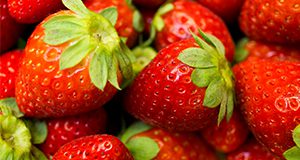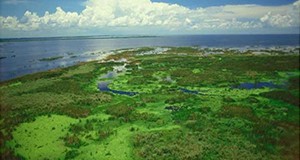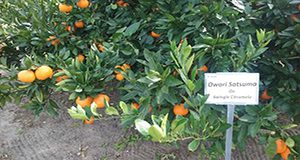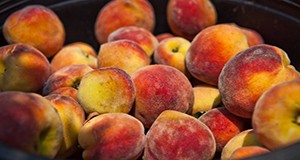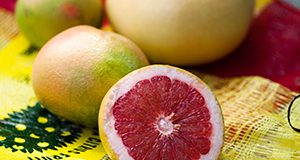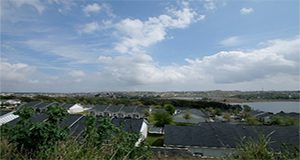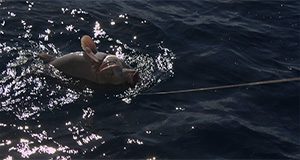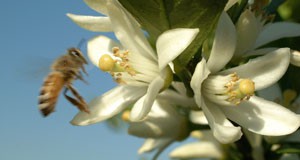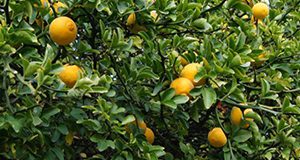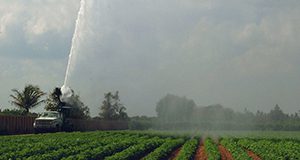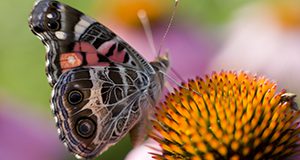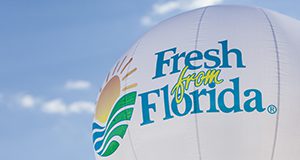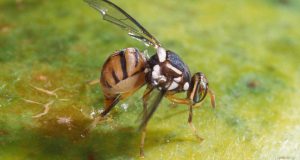Florida has the largest winter strawberry production in the United States. In recent years, Florida's industry has faced growing competition from Mexico. This 5-page fact sheet written by Feng Wu, Zhengfei Guan, and Melvin Garcia-Nazaraiega and published by the UF/IFAS Food and Resource Economics Department compares labor costs between Florida’s and Mexico’s strawberry industries.
http://edis.ifas.ufl.edu/fe1023
Tag: Food and Resource Economics Department
An Overview of Strawberry Production in Mexico
This 5-page fact sheet written by Feng Wu, Zhengfei Guan, J. Jaime Arana-Coronado and Melvin Garcia-Nazariega and published by the UF/IFAS Food and Resource Economics Department provides an overview of Mexican strawberry production with an emphasis on the production in Central Mexico.
http://edis.ifas.ufl.edu/fe1014
Handbook of Florida Water Regulation: Soil and Water Conservation Districts
This 2-page fact sheet written by Michael T. Olexa, Tatiana Borisova, and Jarrett Davis and published by the UF/IFAS Food and Resource Economics Department is part of a handbook designed to provide an accurate, current, and authoritative summary of the principal federal and Florida state laws that govern agriculture. This chapter provides an overview of soil and water conservation districts (SWCDs), explains their purpose and structure, and describes some of the agency partnerships SWCDs make.
edis.ifas.ufl.edu/fe1017
Florida Strawberry Production Costs and Trends
To help growers and policy makers understand how and why strawberry production costs have changed over time, this 5-page fact sheet written by Zhengfei Guan, Feng Wu, and Alicia Whidden and published by the UF/IFAS Food and Resource Economics Department presents cost information collected over a five-year period, analysis of the cost structure of Florida strawberries, and an examination of the trend of changing costs along with the factors underlying the trend.
http://edis.ifas.ufl.edu/fe1013
Satsuma Mandarin Budget and Profitability Analysis for North Florida
This 16-page analysis written by Kevin R. Athearn, Peter C. Andersen, Bent V. Brodbeck, Lei Lani L. Davis, Clay Olson, Daniel K. Fenneman, Matthew Lollar, Derek Farnsworth, and Michael Perez and published by the UF/IFAS Food and Resource Economics Department provides research-based information and a description of satsuma mandarin markets, production costs, and potential returns for citrus growers who are considering establishing a satsuma grove in north Florida. Its purpose is to serve as a reference and model for growers to create their own enterprise budgets and make financial projections. An enterprise budget estimates revenues, costs, and net returns for a particular crop or farm enterprise to help growers assess the economic viability and risk of an enterprise, compare enterprises, and evaluate production or marketing changes. The budget and financial analysis may assist prospective and current satsuma growers, agricultural consultants, and lenders with planning and decision making.
http://edis.ifas.ufl.edu/fe1030
Economic Contributions of Agriculture, Natural Resources, and Food Industries in Florida in 2015, Executive Summary
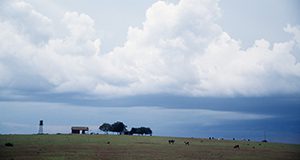
An analysis was conducted using the Implan regional economic modeling system and associated state and county databases (IMPLAN Group LLC) to estimate economic multipliers and contributions for over 500 different industry sectors. Multipliers capture the indirect and induced economic activity generated by re-spending of income or sales revenues in a regional economy. A collection of 121 industry sectors were included in the analysis to represent the broad array of activities encompassed by agricultural and natural-resource commodity production, manufacturing, distribution and supporting services in Florida. Economic contributions can be measured in terms of employment, industry output, value added, exports, labor income, other property income, and business taxes. This three-page summary was written by Alan W. Hodges, Mohammad Rahmani, and Christa D. Court and published by the UF/IFAS Food and Resource Economics Department.
http://edis.ifas.ufl.edu/fe1020
Establishment and Production Costs for Peach Orchards in Florida: Enterprise Budget and Profitability Analysis
While the Florida peach industry is small, it has experienced significant growth in recent years. This 20-page article written by Ariel Singerman, Marina Burani-Arouca, and Mercy Olmstead and published by the Food and Resource Economics Department summarizes the establishment and production costs as well as the potential profitability of a peach orchard in Florida. It includes an enterprise budget, estimates of potential revenue and undiscounted cash flows for different combinations of prices and yields, and an investment analysis. The information in this article should be relevant to both current and potential Florida peach growers.
http://edis.ifas.ufl.edu/fe1016
Cost of Production for Fresh Grapefruit Grown in Indian River, 2015/16
This 4-page article written by Ariel Singerman and published by the Food and Resource Economics Department presents the cost of production per acre for growing fresh grapefruit in the Indian River region during 2015/2016, based on a survey of growers conducted at the Indian River Citrus League production committee meeting in mid-July 2016. The cost estimates do not represent any individual operation; rather, their purpose is to serve as a benchmark for the industry. Typical users of these estimates include growers, consultants, property appraisers, and researchers.
http://edis.ifas.ufl.edu/fe1011
Collaborative Planning for the Future of Water Resources in Central Florida: Central Florida Water Initiative
Rules and regulations that govern our use of natural resources, specifically water, are changing. Over the past 80 years, Florida’s population increased four times, from approximately 5 million to more than 20 million people. With this population increase, water needs have also increased. Forward-looking communities think about the future of their towns, counties, or the state as they work on redefining regulations to meet future water needs without harming our springs, lakes, rivers, and estuaries. This 4-page fact sheet written by James Fletcher and Tatiana Borisova and published by the Food and Resource Economics Department discusses the Central Florida Water Initiative, which deals with advancing water-use and water-resource-protection strategies for Orlando and its vicinity.
http://edis.ifas.ufl.edu/fe1012
Awareness, Knowledge, and Perceptions of Barotrauma and Barotrauma Mitigation: A Survey of Florida Anglers
Saltwater recreational fishing is an important economic engine for Florida’s coastal communities. The annual economic impact to the Florida economy of saltwater recreational fishing, which sustains 110,000 jobs, is estimated to be $13 billion. Given the popularity and economic importance of reef fish, careful management of these fish stocks is imperative for the sustainability of the reef-fish resource. Barotrauma, a phenomenon that causes problems for deep-water fish caught and brought to the surface, is recognized by fishery managers as a key cause of death in “catch-and-release” reef fish. This 5-page fact sheet written by Charles Adams, Joy Hazell, Lisa Krimsky, Bryan Fluech, Betty Staugler, John Stevely, and Robert Botta and published by Food and Resource Economics Department describes a recent survey of Florida saltwater anglers and sheds light on incentives for and constraints against the use of barotrauma mitigation devices.
http://edis.ifas.ufl.edu/fe1010
Does Consumers' Awareness Impact Their Purchase Likelihood of Neonic-Free Plants?
Neonicotinoid (neonic) pesticides have been facing intense scrutiny because of their potential role in pollinator insect population declines. Research has shown that insecticide use in general has resulted in $284 million per year in damages to honeybee and pollinator services in the United States. This is especially worrying because food supply would fail to meet increasing global food demand without pollinator insects.
Consumer awareness of neonic pesticides increases the purchase likelihood for plants that are labeled “neonic-free,” and, as consumer awareness of neonics increases, demand for plants may decrease if there is limited availability of neonic-free options. This 5-page fact sheet written by Hayk Khachatryan and Alicia Rihn and published by the Food and Resource Economics Department explains the practical implications for growers, retailers, and policy makers and describes how these stakeholders can benefit from increased awareness of this important new market niche.
edis.ifas.ufl.edu/fe1008
Evolution of Citrus Disease Management Programs and Their Economic Implications: The Case of Florida’s Citrus Industry
New exotic diseases (citrus canker, HLB, and citrus black spot) have sharply increased the real cost of production of citrus in Florida. Growers have been applying different management strategies, and more effective treatments are being researched. The costs and benefits of these alternatives will need to be quantified to establish their economic feasibility. This 5-page fact sheet written by Ariel Singerman and Marina Burani-Arouca and published by the Food and Resource Economics Department focuses on the costs of managing exotic citrus diseases as they become endemic or established within a citrus industry, with Florida used as an example. The steep increase in the real cost of production of citrus in Florida from 2003/04 to 2014/15 provides evidence that managing endemic exotic diseases is very costly for growers, even without taking into account the effect those diseases have on yields. Therefore, governmental policies focused on preventing the introduction of additional exotic diseases would be highly beneficial for citrus growers and the Florida citrus industry as a whole.
edis.ifas.ufl.edu/fe915
What the 2012 Census of Agriculture Is Telling Us about Miami-Dade County
Agriculture is an important contributor to Florida’s economy. Only the tourism industry employs more Floridians. In 2012, agricultural output was estimated at $141.8 billion, accounting for 14.9% of the state’s gross domestic product, and providing employment for 20.8% of the state’s labor force. Monitoring the performance of the sector over time is therefore of critical importance to various stakeholders. This 8-page publication written by Edward Evans and published by the Food and Resource Economics Department focuses on the Agricultural Census data for Miami-Dade County and specifically examines trends over the 15-year period from 1997 to 2012 with the aim of highlighting some of the major trends occurring in the Miami-Dade County agricultural sector. In general, the data show that in spite of challenging times, the agricultural industry has remained important, contributing $604 million to the Florida economy in 2012.
http://edis.ifas.ufl.edu/fe1001
Are Consumers Interested in Ornamental Plants That Benefit Pollinator Insects?
Population declines among bees, butterflies, and other pollinator insects are very worrying because 70% of the world’s food crop production depends upon these tiny insect workers. Fortunately, ninety million US households have yards, landscapes, or gardens that can enhance pollinator habitat and health. Consumers’ actions can drastically impact pollinator insects and even help them to recover. This 5-page fact sheet written by Hayk Khachatryan and Alicia Rihn and published by the UF Department of Food and Resource Economics, October 2016, describes a new UF/IFAS study of consumers’ actions and perceptions as they considered ornamental plants that benefit pollinators. It covers consumers’ current actions to aid pollinators, their interest in purchasing plants to help pollinators, and their perceptions about plant availability, and it describes strategies for merchants and producers to cater to consumer preferences for in-store communications/promotions and help them to find and purchase plants that aid pollinator insects.
http://edis.ifas.ufl.edu/fe997
Florida Consumer Preferences for Ornamental Landscape Plants
Certain attributes of ornamental landscape plants make them more attractive to consumers. This 5-page fact sheet written by Hayk Khachatryan and Alicia Rihn and published by the UF Department of Food and Resource Economics, October 2016, assesses the impacts of price, plant type, pollinator friendliness, production methods, and origin attributes on consumers’ purchasing likelihood for ornamental landscape plants. Recommendations for green industry stakeholders are also provided.
http://edis.ifas.ufl.edu/fe1000
Florida Consumer Preferences for Indoor Foliage Plant Attributes
Consumer demand for indoor foliage plants is decreasing. One strategy to counter decreasing demand is to align products with consumer needs. To explore this strategy, this 4-page fact sheet written by Hayk Khachatryan and Alicia Rihn and published by the Department of Food and Resource Economics examines purchasing barriers for indoor foliage plants so that breeders, growers, suppliers, and retailers may develop and promote products to overcome those barriers. This paper also investigates the potential of using novel plant attributes that are not readily apparent in retail outlets to generate consumer interest in indoor foliage plants.
http://edis.ifas.ufl.edu/fe994
Profitability of Citrus Tree Greenhouse Production Systems in Florida
Nurseries are a vital part of the citrus industry in Florida, providing growers with trees for replanting and expanding citrus groves. As part of the response to citrus greening and canker disease in the industry, nursery-aimed regulations were set in place to try to guarantee the production of trees “free of virus or other graft transmittable diseases” in plant nurseries. The new regulations resulted in an important shift for producers from traditional open field groves to greenhouses. This 4-page fact sheet describes an experiment performed at the UF/IFAS Mid-Florida REC in Apopka to test the profitability of different inputs in citrus-producing greenhouse nurseries and provides recommendations that will be useful for the whole citrus-tree-producing sector. Written by Hayk Khachatryan and Alicia Rihn and published by the Food and Resource Economics Department.
http://edis.ifas.ufl.edu/fe999
Economic Contributions of Agriculture, Natural Resources, and Food Industries in Florida in 2014
Agriculture, natural resources, and food industries remain a significant force in the economy of Florida, and informed public policy demands recognition of the economic contributions of these industries. Economists at the University of Florida Institute of Food and Agricultural Sciences (UF/IFAS) evaluated the economic contributions of the agriculture, natural resources, and food industries for calendar year 2014 to update previous reports and provide current information on economic trends.
Direct employment in agriculture, natural resources, and food industries in Florida grew from 1.252 million jobs in 2001 to a peak of 1.351 million jobs in 2008, before declining during the Great Recession of 2009/10, and then recovering to 1.565 million jobs in 2014, which was 24.9 percent higher than 2001, representing an average annual growth rate of 1.9 percent. Overall growth in industry contributions during this period reflected an increase in exports of Florida products to domestic and world markets.
This 5-page executive summary was written by Alan W. Hodges and Mohammad Rahmani and published by the Food and Resource Economics Department.
http://edis.ifas.ufl.edu/fe993
Identifying the Attitudes and Preferences of Parents and Children for Seafood: Summary of Focus Group Results
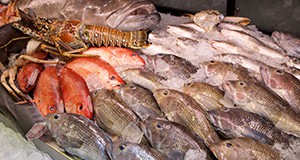
Seafood contains high-quality protein, vitamins, and minerals that have many health benefits, but the average family’s consumption of seafood in the United States remains below recommended levels. To begin to understand how to raise consumption levels, the study described in this three-page fact sheet focused on the influence parents’ seafood consumption habits may have on their children. Written by Anh Sam, Xiang Bi, and Lisa House and published by the Department of Food and Resource Economics.
http://edis.ifas.ufl.edu/fe992
Estimated Costs and Regional Economic Impacts of the Oriental Fruit Fly (Bactrocera dorsalis) Outbreak in Miami-Dade County, Florida
Oriental fruit flies, very destructive pests of fruits, were first detected in the Redland area of Miami-Dade County on August 26, 2015, and as of January 2016, 165 flies had been captured. This triggered an eradication program and establishment of a quarantine area composed of agricultural operations and nonagricultural properties, such as residential and commercial areas. As part of the effort to eradicate the fruit fly, growers and packers in the quarantine area are required to sign a compliance agreement that outlines the procedures necessary for harvesting, handling, and postharvest processing of agricultural products that may serve as hosts for any life cycle of the fruit fly. This 12-page fact sheet written by Sergio Alvarez, Edward A. Evans, and Alan W. Hodges and published by the UF Food and Resource Economics Department provides estimates of the direct and indirect losses to Florida’s agriculture and related sectors as a result of the outbreak and ensuing quarantine and eradication programs.
http://edis.ifas.ufl.edu/fe988
